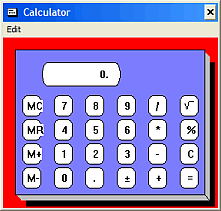I have a slightly seedy secret. That's not easy to say or admit to. The secret is this: I'm fascinated by the development and history of Microsoft Windows. There. It's out in the open, a secret no more.
I can't get enough of tales such as why OLE guru Kraig Brockschmidt was for years credited by name as the creator of the Windows Calculator accessory, or trivia like why the Taskbar is at the bottom of the screen and not the top. Or why you have to click the Start button to shut down. Or what the story is behind the word “Burgermaster” buried deep in the heart of Windows. Or how the Freecell game came about because one of the developers working on Windows NT security was burnt out. Or how the heart of Windows from Windows/386 in 1987 through to Windows Me in 2000 was based on virtual machine research done by IBM in the early 1970s. It seems that there's a story waiting to be told behind every facet or oddity of Windows.
I get the impression that Microsoft doesn't enjoy acknowledging how old Windows really is. You might be forgiven for thinking that the first version was Windows 3.0 from 1990. In many ways that's true—by all accounts it was certainly the first usable version. However, Windows was first announced twenty years ago and the first release emerged blinking into the light in 1985. Windows 2.0 (with overlapping windows!) came out in 1987. These early versions—of what must be the world's best-selling software program—ran from floppies and ran in Real Mode. This meant that like the MS-DOS operating system they depended on, they were limited to just one megabyte of memory. By contrast, Windows XP won't even get out of bed for less than 128 times that amount.
Now information on Windows before version 3.0 is hard to come by. So imagine my deep joy when I came across a website yesterday, that not only features copious screen shots from Old Windows, but also offers for download the original accessory programs from Windows 1.0 and Windows 2.0! Obviously I had to try them out, purely in the interests of investigating just how Microsoft's backwards compatibility claims stack up, you understand. Actually, the accessories have had parts of their innards hacked so that they can run on New Windows. It's something of an archaeological experience running seventeen year old bits of Windows under Windows XP.
In contrast to Microsoft's attitude towards their third–time lucky Windows, Borland proudly curate an online museum, where you can freely download the original TurboPascal for DOS (Delphi minus seven?) as well as other versions of that product and Borland's C++ compilers too, if you're that way disposed. But I haven't done so, because much as I love Delphi and am interested in Borland and its heritage…well, it just isn't Windows, is it?

Comments
There are 2 comments on this post. Comments are closed.
Neat stuff :) I recognize the old clock and calendar applications. I remember when Windows 3.0 came out and we installed it on a 286/12 w/ VGA monochrome, which didn't have a mouse and were shocked to learn that it _required_ a mouse to work. If I remember correctly Avagio was one of the few other apps like that at the time.
No one spotted the deliberate mistake I made, then? The bits of Windows are actually eighteen years old and not seventeen! ;-) Talking of dodgy maths, for years the Windows Calculator couldn't perform a simple subtraction such as 3.01 minus 3. It would give the result as 3.00! Something to do with C++ libraries apparently.